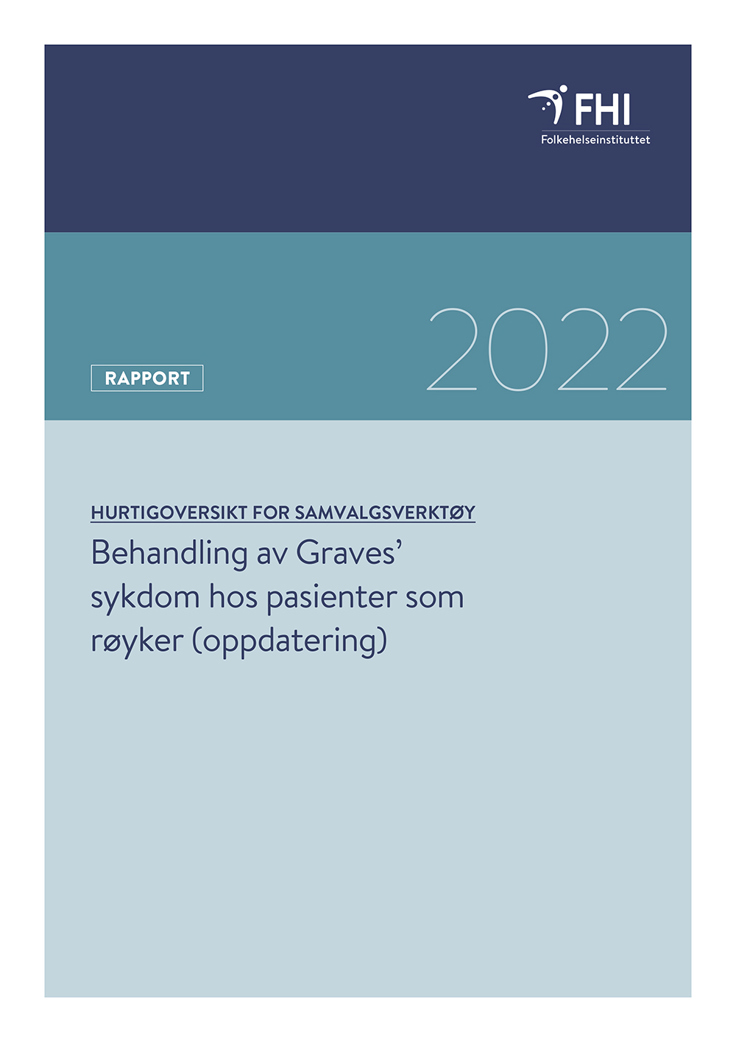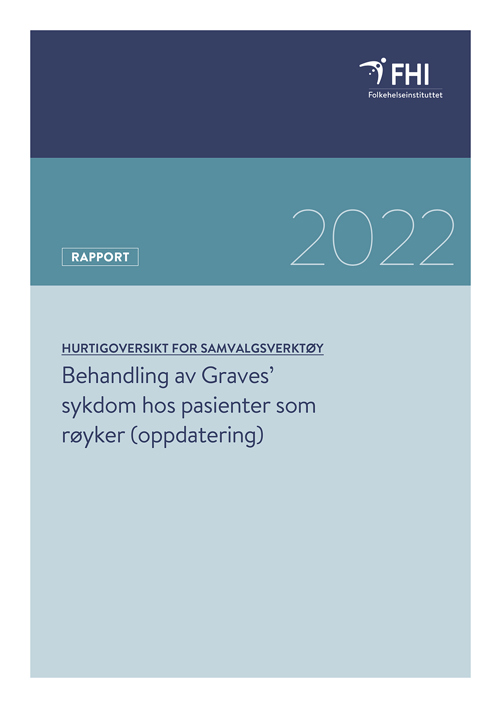Treatment of Graves' disease in patients who smoke: a rapid review for patient decision aid (update)
Systematic review
|Published
The purpose of this rapid review was to evaluate the effect of treatment with radioactive iodine, medication and surgery in Graves' patients who smoke.
Key message
Graves' is an autoimmune disease and the most common cause of hyperthyroidism in younger people. In Graves' disease, the immune system forms antibodies that stimulate the thyroid gland to increase production of the hormone thyroxine. Signs and symptoms of Graves' disease can include unexplained weight loss, palpitations, nervousness, tremors, irritability, fatigue, sleep difficulties, heat intolerance, swelling in the neck (goitre) and eye problems. Smoking is a known risk factor. Eye problems, which often accompany the disease, are also worsened by smoking.
The purpose of this rapid review was to evaluate the effect of treatment with radioactive iodine, medication and surgery in Graves' patients who smoke.
We carried out systematic literature searches in several databases and all references were screened by two independent researchers, but we did not find any systematic reviews that met our inclusion criteria. Therefore, we cannot say anything about the effect of treatment with radioactive iodine, drugs and surgery in Graves' patients who smoke.
However, this work has identified a knowledge gap in the form of a lack of summarized research in the area. We did not search for primary studies, and do not know if there are any studies that could answer the scope with the degree of certainty required for use in patient decision aids.

